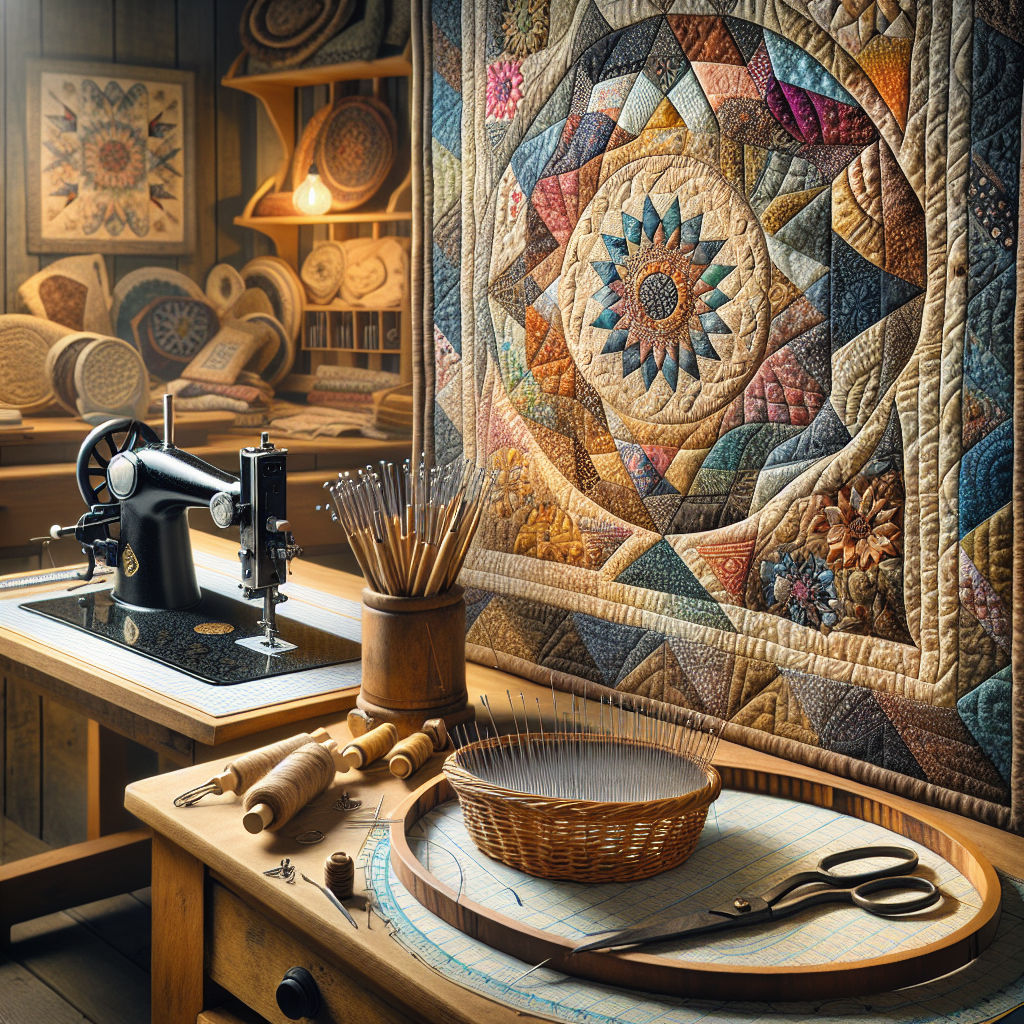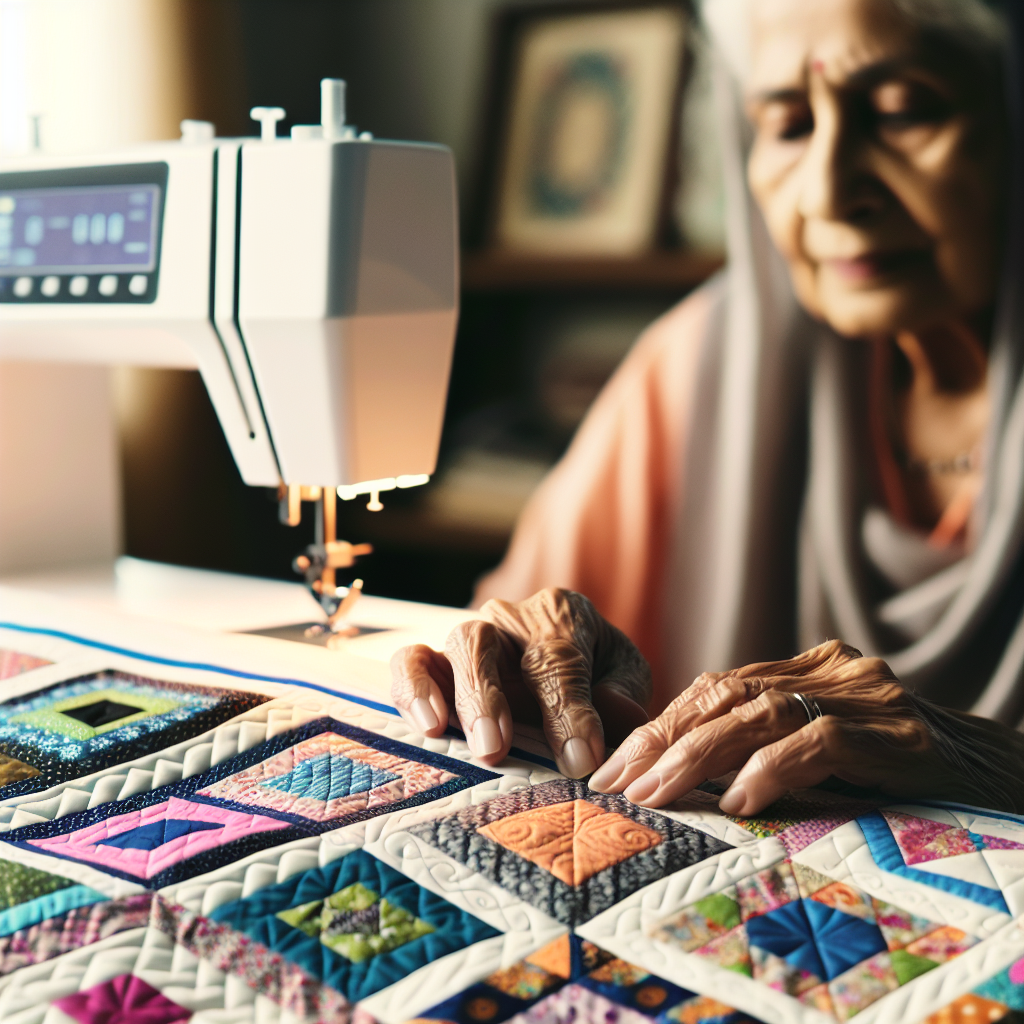Quilting is a time-honored craft that has been passed down through generations, but have you ever wondered about the key differences between hand quilting and machine quilting? While both methods produce beautiful and functional quilts, they each have their distinct characteristics and techniques. Hand quilting requires patience, precision, and a needle and thread, allowing for intricate designs and personalized touches. On the other hand, machine quilting utilizes a sewing machine, enabling faster stitching and the ability to experiment with various patterns. Whether you’re a seasoned quilter or a curious beginner, understanding these nuances can help you choose the right method for your quilting projects.

Hand Quilting
Hand quilting is a traditional method of quilting that dates back centuries. It involves stitching together layers of fabric and batting using a needle and thread. The process is done entirely by hand and requires precision and patience. Hand quilting is known for its intricate designs and attention to detail.
Process
The process of hand quilting begins by layering the backing fabric, batting, and quilt top. These layers are basted together using safety pins or a temporary adhesive spray to prevent shifting during quilting. Next, you select a quilting design or pattern and mark it onto the quilt top. This can be done using a quilting stencil or by tracing the design directly onto the fabric.
To start quilting, you thread a needle with quilting thread and make a knot at the end. The needle is then inserted through all layers of fabric and brought back up to the surface. Your stitches should be small and even, creating a regular pattern across the quilt top. As you progress, you will need to frequently rethread your needle and secure your stitches with small knots to ensure the quilt remains durable.
Hand quilting requires a quilting hoop or frame to hold the layers taut while you work. The hoop or frame can be adjusted to maintain the tension as needed. This tool not only helps to keep the fabric stable but also prevents hand fatigue by providing support as you stitch.
Tools and Materials
To hand quilt, you will need a few essential tools and materials. These include:
- Needles: Quilting needles have a small eye and a sharp point, making them ideal for precise stitching through multiple layers of fabric.
- Quilting Thread: Quilting thread is thicker and stronger than regular sewing thread, ensuring that your stitches hold up over time.
- Marking Tools: These can include quilting stencils, washable fabric markers, or tailor’s chalk to transfer your design onto the fabric.
- Quilting Hoop or Frame: This tool keeps the fabric taut and helps to prevent puckering or distortion as you quilt.
- Fabric and Batting: Choose high-quality fabrics for your quilt top, backing, and batting to ensure durability and a beautiful finished product.
Advantages
Hand quilting offers several advantages that make it a popular choice among quilting enthusiasts. Firstly, it allows for more intricate and detailed designs, as the quilter has complete control over each stitch. This method also allows for greater creativity and improvisation, as the quilter can change the quilting design or pattern as they go along.
Hand quilting also has a unique aesthetic appeal. The stitches created by hand have a distinct look and feel that cannot be replicated by a machine. Many quilters appreciate the organic, handmade look that hand quilting brings to their projects.
Disadvantages
While hand quilting has its merits, it also has some drawbacks to consider. The most significant disadvantage is the time and patience required. Hand quilting is a labor-intensive process that can take weeks or even months to complete, especially for larger quilts. This method is not recommended for those who are looking for quick results or have limited time for crafting.
Additionally, hand quilting may not be suitable for those with hand or wrist issues, as it can cause strain and fatigue. The repetitive motion of stitching can be taxing on the hands and may require frequent breaks or modifications to prevent discomfort.
Machine Quilting
Machine quilting, as the name suggests, is the process of quilting using a sewing machine. This method is faster than hand quilting and allows for a wide range of designs and patterns. Machine quilting is a popular choice among quilters who desire efficiency and precision.
Process
The machine quilting process begins by layering the fabric, batting, and quilt top, just like in hand quilting. These layers are secured together using safety pins or basting spray. Rather than stitching by hand, the quilt is then placed under the needle of a sewing machine.
The quilting design or pattern is selected, and the machine is adjusted accordingly for stitch length and tension. The quilter guides the quilt through the machine, following the marked design lines. The machine’s foot helps to maintain an even stitch length and speed up the quilting process.
Machine quilting allows for a variety of quilting styles, from simple straight lines to intricate free-motion quilting. Free-motion quilting involves moving the quilt freely under the needle, creating unique designs and patterns. This technique requires practice and skill but offers endless possibilities for creative expression.
Tools and Materials
To machine quilt, you will need the following tools and materials:
- Sewing Machine: A regular sewing machine with quilting capabilities or a specialized long-arm quilting machine.
- Quilting Thread: Choose a thread specifically designed for machine quilting, as it needs to withstand the tension and speed of the sewing machine.
- Quilting Needles: Machine quilting needles are sharper and have larger eyes to accommodate the thicker quilting thread.
- Quilting Gloves: These gloves provide grip and control while maneuvering the quilt under the machine’s needle.
- Marking Tools: Similar to hand quilting, you may need marking tools to transfer your design onto the fabric.
Advantages
Machine quilting offers several advantages over hand quilting. The main advantage is speed. Quilting a project using a machine is significantly faster than quilting by hand, making it ideal for those who want to complete their projects in a timely manner. Machine quilting is also less physically demanding than hand quilting, as the machine does most of the work.
Another benefit of machine quilting is the ability to achieve precise, even stitches. Sewing machines have adjustable stitch length and tension settings, allowing for consistent stitching throughout the quilt. This ensures a professional finish and can be particularly advantageous for those new to quilting.
Disadvantages
Despite its benefits, machine quilting has some disadvantages worth considering. One major drawback is the limited flexibility in design options. While machine quilting allows for various stitch patterns, it can be challenging to achieve intricate or complex designs compared to hand quilting. Some quilters find that machine quilting lacks the personal touch and artistry of hand quilting.
Another disadvantage is the investment required in a sewing machine capable of quilting. While basic sewing machines can handle some quilting tasks, specialized quilting machines offer additional features and capabilities. These machines can be expensive, making machine quilting less accessible for some quilters.
Comparison
When deciding between hand quilting and machine quilting, several factors come into play. Let’s compare these methods based on quality, cost, time, and versatility.
Quality
Hand quilting is often praised for the high level of quality it delivers. The intricate hand stitching creates a timeless and heirloom-quality quilt. The individual nature of hand quilting allows for greater attention to detail and a unique touch not easily replicated by a machine.
Machine quilting, on the other hand, offers a different kind of quality. The precision and consistency of machine stitching can result in evenly spaced and professional-looking quilting. However, some quilters argue that machine quilting lacks the charm and character of hand quilting.
Cost
The cost of quilting can vary depending on the method chosen. Hand quilting tends to be more affordable in terms of equipment and materials. Apart from the initial investment in needles, thread, and a quilting hoop or frame, there are minimal ongoing costs.
Machine quilting, on the other hand, often requires a sewing machine specifically designed for quilting, which can be quite costly. Additionally, there may be additional expenses for specialized quilting feet, needles, and thread. However, once the initial investment is made, machine quilting can be more cost-effective over time due to the decreased labor required.
Time
Time is a significant consideration when choosing between hand quilting and machine quilting. Hand quilting is a time-consuming process that requires patience and dedication. The fine stitches and intricate designs can take weeks or even months to complete, depending on the size and complexity of the quilt.
Machine quilting allows for significantly faster quilting, making it an attractive option for those seeking quicker results. With a sewing machine, a quilt can be completed in a fraction of the time required for hand quilting. This is particularly beneficial if you have limited time available for quilting or prefer a more efficient approach.
Versatility
When it comes to versatility, hand quilting offers more freedom and flexibility. Quilters can create elaborate designs, experiment with different stitching techniques, and customize their quilts according to their creative vision. The individuality and artistry of hand quilting allow for limitless possibilities in design and execution.
Machine quilting, while offering less freedom for intricate designs, provides its own versatility. Many sewing machines offer a variety of quilting stitches and patterns to choose from, allowing for different decorative effects. Additionally, free-motion quilting with a sewing machine enables free-flowing designs and adds another layer of artistic expression.
Which method is right for you?
Deciding between hand quilting and machine quilting ultimately depends on your personal preferences, skills, and constraints. Consider the following factors before making your choice.
Considerations
Think about your motivation for quilting and the desired outcome of your project. If you value the artistic and individual touch of handmade crafts and are willing to invest time and patience, hand quilting may be the perfect fit. Hand quilting is also ideal for quilting small or medium-sized projects that allow you to enjoy the process without feeling overwhelmed.
If efficiency and faster results are more important to you, machine quilting is likely the better option. If you have limited time available or prefer a more streamlined process, machine quilting will enable you to complete your quilts more quickly. Additionally, machine quilting may be preferable for larger or more intricate projects that would be impractical to hand quilt.
Skills and Experience
Consider your skill level and experience in quilting. Hand quilting requires practice and precision, as it demands fine motor skills and attention to detail. If you are new to quilting or have limited sewing experience, machine quilting may be a more accessible starting point. Sewing machines offer intuitive functions and features that can assist beginners in achieving professional-looking results.
However, if you enjoy the challenge of traditional crafts and are confident in your stitching abilities, hand quilting can provide a rewarding and fulfilling experience. Whether you are a beginner or an expert, both hand quilting and machine quilting offer opportunities for growth and creativity.
Time and Patience
Consider your available time and level of patience. Hand quilting is a labor-intensive process that requires a significant investment of time and perseverance. If you have the patience and enjoy the meditative aspect of hand quilting, the process can be incredibly fulfilling. However, if you tend to get frustrated or lack the time for extended projects, machine quilting can help you achieve your quilting goals more efficiently.
In conclusion, both hand quilting and machine quilting have their unique advantages and disadvantages. Hand quilting offers intricate detail and a personalized touch, while machine quilting provides efficiency and precision. Consider your priorities, skills, and time constraints to determine which method is right for you. Whichever option you choose, remember that quilting is a beautiful and rewarding craft that allows you to create cherished heirlooms and express your creativity. Happy quilting!

